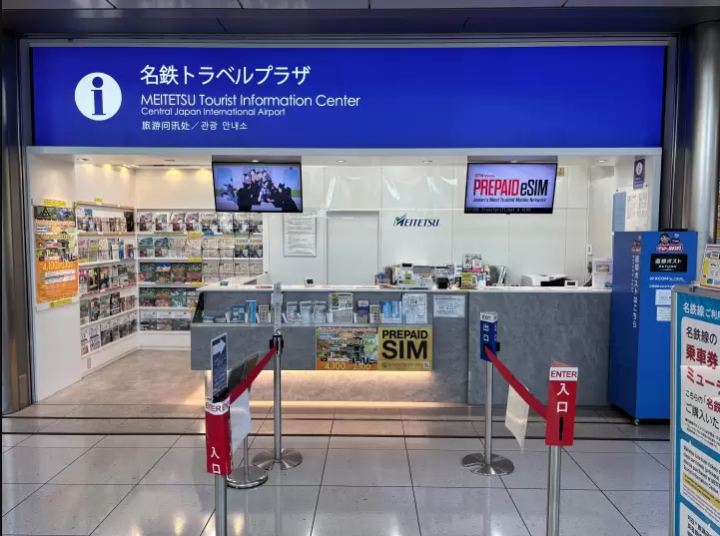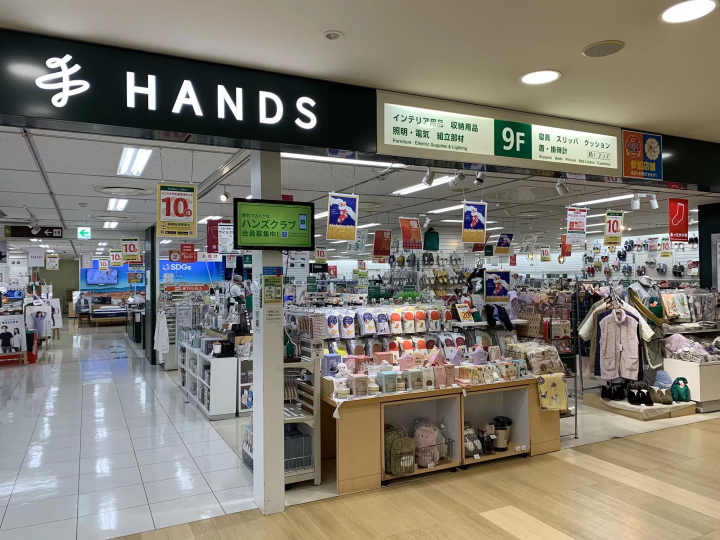Near Osaka and Kyoto! 15 Hidden Gems to Visit during Golden Week

Many people in Japan will enjoy an 11-day vacation during Golden Week 2025, from late April to early May. This article introduces 15 lesser-known locations in the Kansai area (Osaka, Kyoto, Hyogo, and Shiga) that should not be very crowded during the holiday!
A Vacation Away from Urban Areas
Golden Week is a string of public holidays at the beginning of May when many people in Japan travel. This often leads to traffic jams and overcrowding of famous destinations.
The April 26 - May 6 interval in 2025 is considered Golden Week. We introduce hidden gems near Osaka and Kyoto that are less likely to become overcrowded.
15 Hidden Gems in the Kansai Region
1. Osaka: Expo ’70 Commemorative Park
2. Osaka: Nakanoshima and Kitahama
3. Osaka: Settsukyo Gorge
4. Osaka: Tondabayashi Jinaimachi
5. Kyoto: Saihoji Temple
6. Kyoto City Kyocera Museum of Art
7. Kyoto: Murin-an Garden and the Keage Incline
8. Nara Palace Site Historical Park
9. Hyogo: Takenaka Carpentry Tools Museum
10. Hyogo: Takeno Beach
11. Hyogo: Fukuchiyama Line Haisenjiki Walking Route
12. Hyogo: The Fukusumi District in Tamba-Sasayama
13. Hyogo: Himeji and Mt. Shosha
14. Hyogo: Wind Museum
15. Shiga: Mt. Ibuki (Motoring Route)
Get the best deals on train tickets in Japan!
1. Osaka: Expo ’70 Commemorative Park

Photo by Pixta
The Expo ’70 Commemorative Park was built on the site of the Osaka Expo held in 1970.
While the park is known for the Tower of the Sun, a monument created by artist Taro Okamoto, it is located in Suita City, which neighbors Osaka City and is less crowded.
Visitors can enter the tower (*) starting in 2018. Taro Okamoto's works are displayed inside and should not be missed.
The National Museum of Ethnology, also on the grounds, is another facility worth visiting. The museum has a collection of over 345,000 items, including native dresses from all over the world. Expo City, located next to the park, also offers shopping and entertainment.
*A reservation must be made to enter the tower one day before your visit.
Please note that this park might be more crowded than previous years in 2025 due to Osaka hosting the World Expo this year.
Tower of the Sun
Address: Osaka, Suita, Senri Banpaku Koen 1-1
Admission: 930 yen (Adults)
Official Website: https://taiyounotou-expo70.jp/en/
National Museum of Ethnology
Address: Osaka, Suita, Senri Banpaku Koen 10-1
Admission: 580 yen (Adults)
Official Website: https://www.minpaku.ac.jp/en
2. Osaka: Nakanoshima and Kitahama
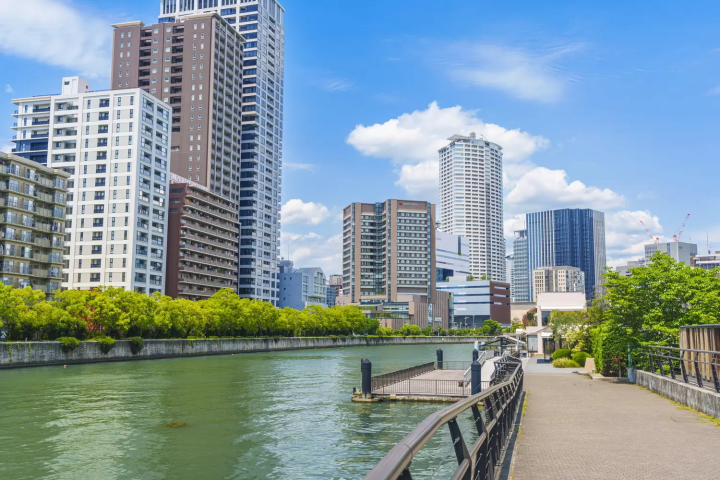
Photo by Pixta
Nakanoshima and Kitahama, districts located on both sides of the Tosabori River, are known as quiet, elegant areas.
Nakanoshima Children's Forest (*1) is a library designed by Tadao Ando. The facility has a collection of about 20,000 volumes, suitable for people of all ages.
Nakanoshima Museum of Art, Osaka (*2), which opened in 2022, is a newcomer to the Osaka art scene. Their collection, a total of over 6,000 items, includes domestic and international modern artwork, furniture, and posters.
*1: As admission is limited, it would be wise to make an online reservation.
*2: Tickets can be purchased online.
Nakanoshima Children'sForest
Address: Osaka, Osaka, Kita, Nakanoshima 1‐1‐28
Admission: Free
Official Website: https://kodomohonnomori.osaka/en/
Nakanoshima Museum of Art, Osaka
Address: Osaka, Osaka, Kita, Nakanoshima 4-3-1
Admission: The fee varies according to each exhibition. There is no admission for the non-exhibition spaces.
Official Website: https://nakka-art.jp/
Read also
3. Osaka: Settsukyo Gorge

Photo by Pixta
Settsukyo Gorge is a scenic spot in Takatsuki City, which borders Osaka City. It is located at the upper reaches of the Akuta River, which runs through Takatsuki from north to south. The spot is a part of Settsukyo Park, which is 42.65 hectares in size.
Visitors can have fun in the shallows or stroll the trekking route, enjoying views of boulders called Gyoja-iwa and Hachijo-iwa, along with a waterfall.
It is a 15-minute drive from Takatsuki-shi Station to the park. The area, which is easily accessible from Osaka City, is an oasis.
Settsukyo Park
Address: Osaka, Takatsuki, Hara
Admission: Free
Official Website: https://www.takatsuki-kankou.org/settsukyo/en/ (Takatsuki City Tourist Association)
4. Tondabayashi Jinaimachi

Photo by Pixta
The Jinaimachi area in Tondabayashi City is designated as the only traditional building preservation district in Osaka Prefecture. This area, including Koshoji Betsuin Temple, is an important cultural property that dates back to the Sengoku Period.
The remaining buildings were mostly constructed from the Edo to early Showa periods. Additionally, the Japanese government has designated the former Sugiyama residence as an important cultural property.
Visitors will feel as if they have slipped back in time. Some buildings have even been renovated into cafes, restaurants, and general shops.
Tondabayashi Jinaimachi
Address: Osaka, Tondabayashi, Tondabayashi
Official Website: https://jinaimachi.net/
5. Kyoto: Saihoji Temple
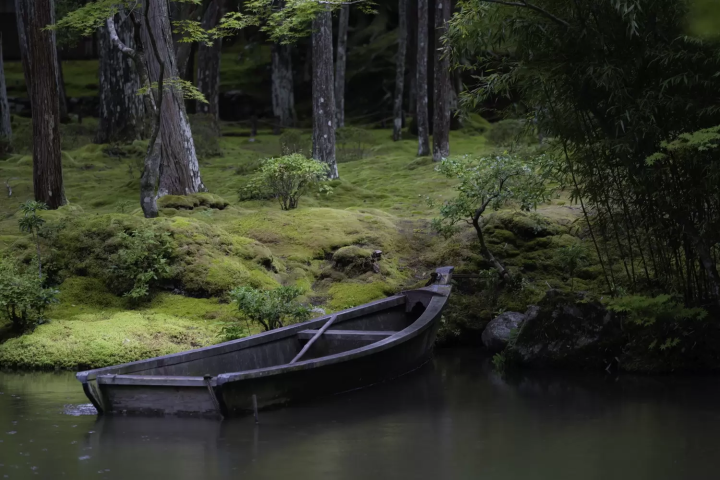
Photo by Pixta
Kyoto's Saihoji Temple was founded during the Nara Period. With about 120 moss varieties covering the premises, it is also known as Koke-dera, a moss temple.
The best season to view the natural green carpet is early summer. Saihoji Temple is also designated as a World Heritage site.
To preserve the grounds, a visit reservation (*) is required. Participants can view the garden after offering prayers and hand-copying sutras.
*: Reservations can be made online or by using a double postcard. Please note that all participants must be at least 13 years old during the visit.
Saihoji Temple
Address: Kyoto, Kyoto, Nishikyo, Matsuo-Jingatani 56
Admission: 4,000 yen and up
Official Website: https://saihoji-kokedera.com/en/
6. Kyoto City Kyocera Museum of Art

Photo by Pixta
Kyoto City Kyocera Museum of Art, which re-opened after renovations in 2020, is one of the famous art facilities in Kyoto. Along with Heian Jingu Shrine and Kyoto City Zoo, it is located inside Okazaki Park.
The museum has become a popular photo spot with a mix of retro and modern styles. The central hall is also open to the public.
A museum shop, which handles items related to exhibitions and Kyoto, is located inside, along with a stylish cafe.
*Tickets can be purchased online.
Kyoto City Kyocera Museum of Art
Address: Kyoto, Kyoto, Sakyo, Okazaki-Enshoji 124
Admission: The fee varies according to each exhibition. There is no admission for the non-exhibition spaces.
Official Website: https://kyotocity-kyocera.museum/
7. Kyoto: Murin-an Garden and the Keage Incline

Photo by Pixta
From Nanzenji Temple, it is a 10-minute walk to Murin-an (*), built in 1894 as a villa for Yamagata Aritomo, a politician at the time. It consists of a main house, a Western-style house, a tearoom, and a garden. The Japanese-style garden, regarded as a masterpiece, should not be missed. The view of the garden from the cafe is truly breathtaking.
Keage Incline, known as a spot to view cherry blossoms, is located nearby. The remains of an incline railway, which was used to transport vessels, have an elegant ambiance. It should be less crowded during Golden Week than cherry blossom season.
*A reservation is required for a visit. It can be made online 30 days before your preferred date.
Murin-an Garden
Address: Kyoto, Kyoto, Sakyo, Nanzenji-Kusagawa 31
Admission is 900 yen during Golden Week. There is a discount for Kyoto citizens over 70 years old.
Official Website: https://murin-an.jp/en/
Keage Incline
Address: Kyoto, Kyoto, Higashiyama, Higashi-Komonoza 339
Admission: Free
Official Website: https://biwakososui.city.kyoto.lg.jp/en/place/detail/23
8. Nara Palace Site Historical Park

Photo by Pixta
The Nara Palace Site Historical Park was built on the site of Heijo-kyo, the Japanese capital in the Nara Period (710-784).
The size of the park, which is also a World Heritage site, is about 132 hectares or equal to 28 Tokyo Domes. Visitors should feel that the premises are less crowded, even during peak season.
A project to reconstruct the buildings from 1,300 years ago is underway, and visitors can view the interior of Daigoku-den and Suzaku-mon.
The grounds also include the Heijokyu Izanaikan Museum, which displays artifacts excavated at the site, and sightseeing facilities, where a gift shop is housed.
Nara Palace Site Historical Park
Address: Nara, Nara, Nijo-Oji, Minami 3‐5‐1
Admission: Free
Official Website: https://www.heijo-park.jp/en/
9. Hyogo: Takenaka Carpentry Tools Museum
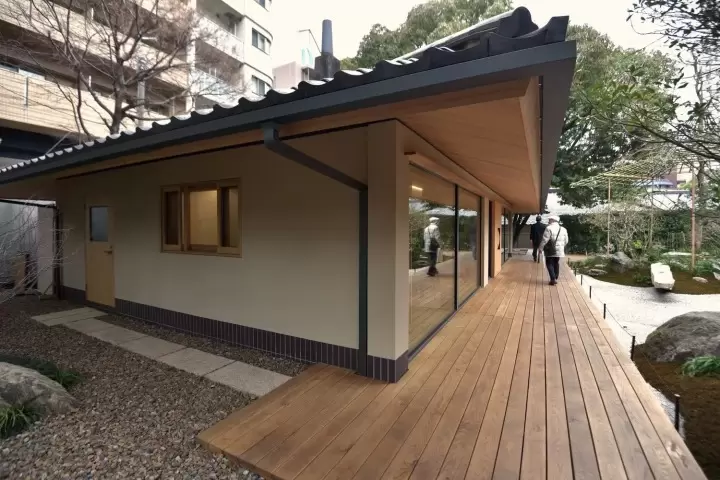
Photo by Pixta
The Takenaka Carpentry Tools Museum is located near JR Shin-Kobe Station, where the Shinkansen stops. It is the only museum in Japan specializing in carpentry and displaying traditional wooden structures.
The museum, a product of the traditional building system, also hosts various workshops where visitors can learn woodworking alongside expert carpenters.
While the facility is popular with overseas visitors, it is still not famous among Japanese travelers.
Takenaka Carpentry Tools Museum
Takenaka Carpentry Tools MuseumAddress: Hyogo, Kobe, Chuo, Kumochi 7‐5‐1
Admission: 700 yen (Adults)
Official Website: https://www.dougukan.jp/?lang=en
Read also
10. Hyogo: Takeno Beach
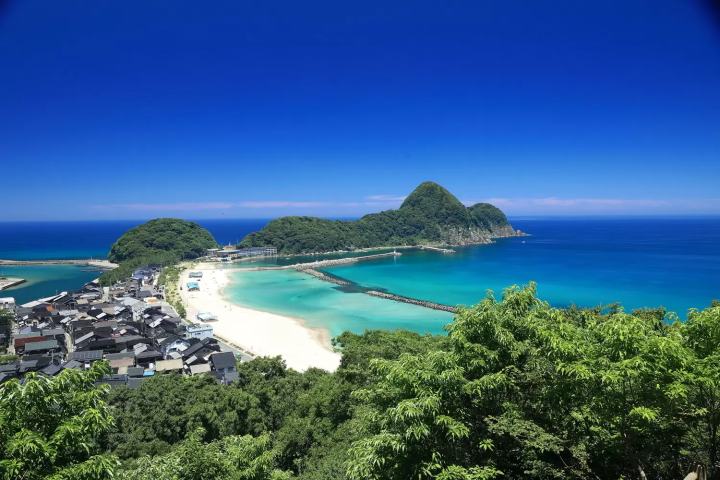
Photo by Pixta
Takeno Beach, located in the northern area of Hyogo Prefecture, is famous for its stunning kilometer-long white sands and emerald-green waters.
While sea bathers flock to the beach in summer, it should not be so packed with people during Golden Week. That's because this public holiday does not coincide with the opening of the swimming season.
Visitors can enjoy marine activities such as sea kayaking, canoeing, or a pleasure boat cruise while enjoying the magnificent scenery.
It is a two-hour drive to this beach from Kobe or Osaka. While the access may not be easy, it will be worth visiting!
Takeno Beach
Address: Hyogo, Toyo-oka, Takeno, Takeno
Official Website: http://www.takeno-kanko.com/en/ (Takeno Tourism Association)
11. Hyogo: Fukuchiyama Line Haisenjiki Walking Route

Photo by Pixta
The Fukuchiyama Line Haisenjiki Walking Route is a trekking route along the discontinued area of the JR Fukuchiyama Line, which used to be serviced by steam locomotives.
The route follows the ravine of the Muko River. It is about 4.7 kilometers and mostly flat, making it fit for first-time hikers.
Tunnels and bridges used in the old days remain along the route.
JR Namaze Station, the nearest station, is located next to Takarazuka Station. Takedao Onsen (hot spring) is also located nearby, so it might be fun to bathe after the trek.
Since there are few parking lots in this area, hikers are encouraged to use public transportation. A visit in the early hours is recommended for those who wish to avoid crowds.
Fukuchiyama Line Haisenjiki Walking Route
Address: Hyogo, Nishinomiya, Shiose
Admission: Free
Official Website: https://nishinomiya-kanko.jp/fukuchiyamasen_haisenjiki2019/ (Nishinomiya Tourism Association)
12. Hyogo: Fukusumi in Tamba-Sasayama
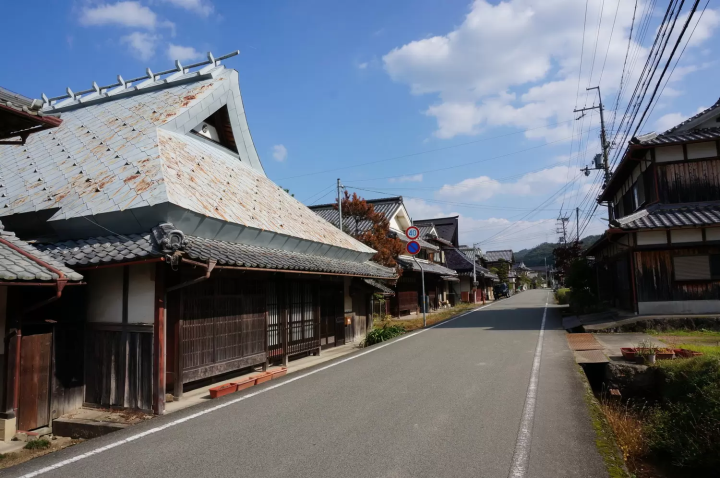
Photo by Pixta
Tamba-Sasayama, a city located along the border of Hyogo and Kyoto, prospered as a transportation hub in the old days.
While Sasayama Castle is a popular sightseeing spot, our recommendation is the Fukusumi District, which is about 20 minutes away by car from the castle.
In 2012, the Japanese government designated the area as a traditional buildings preservation district. The number of cafes and inns renovated from old buildings is steadily growing.
The townscape and the idyllic fields offer a glimpse of days past. Visitors will feel like they have come home.
Fukusumi District in Tamba-Sasayama
Address: Hyogo, Tamba-Sasayama, Fukusumi
Admission: Free
Official Website: https://www.city.tambasasayama.lg.jp/soshikikarasagasu/bunkazaika/denken/5798.html
13. Hyogo: Himeji and Mt. Shosha
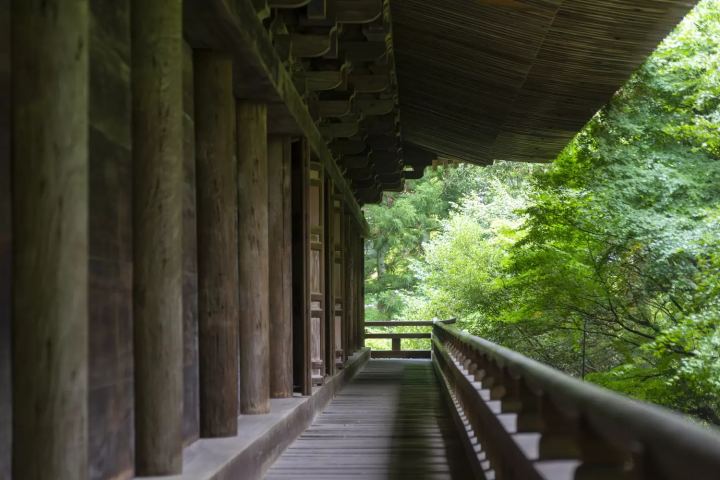
Photo by Pixta
Although Himeji may be known for Himeji Castle, its World Heritage castle, it is also home to Mt. Shosha, a spot to fully enjoy nature.
Engyoji, a temple of the Tendai sect, is located on the mountain, which has been revered as a holy place for a long time. It is also a popular spot to enjoy the autumn foliage. Compared to autumn, the area does not attract a crowd in May. Therefore, visitors should enjoy hiking in a relatively quiet environment.
The Nozato District in Himeji, with its nostalgic townscape, is a sightseeing spot that is not yet well-known. There are some eateries in the area, so it might be fun to visit.
At the Shinki Bus Information Center, near Himeji Station, visitors can purchase a special ticket for a bus ticket (round-trip) to Mt. Shosha and a Mt. Shosha Ropeway ticket (round-trip).
Mt. Shosha
Address: Hyogo, Himeji, Shosha
Admission: Mt. Shosha Ropeway/1,200 yen (Round-trip ticket for adults); 1,500 yen (Bus/Ropeway ticket)
Official Website: https://www.mt-shosha.info/
Read also
14. Hyogo: Wind Museum
The Wind Museum is a facility where you can enjoy artwork in the open air. The museum displays the works of Susumu Shingu, an artist creating kinetic sculptures.
It is located in Arima-Fuji Park in Sanda City, Hyogo, and the lawn-covered ground is perfect for a picnic. Visitors can enjoy cycling and hiking at the park, surrounded by woodlands and a lake.
From Kobe City, it takes an hour by car to the park, so the facility should not be bustling with tourists.
Wind Museum
Address: Hyogo, Sanda, Ninji 968
Admission: Free
Official Website: http://windmuseum.jp/
15. Shiga: Mt. Ibuki (Motoring Route)

Photo by Pixta
Motoring enthusiasts should visit Mt. Ibuki, one of the 100 Famous Japanese Mountains. From Ibukiyama Driveway, a motoring route that reaches the 9th station of Mt. Ibuki, visitors can enjoy the view of Lake Biwa and the northern Alps.
During Golden Week, the route spanning 17 kilometers will be decorated with lush green leaves.
Travelers can take a break at Sky Terrace Ibukiyama, located 1,260 meters above sea level.
Mt. Ibuki
Address: Shiga, Maibara, Ueno
Admission: 3,140 yen (Ibukiyama Driveway toll for regular-sized cars)
Official Website: https://www.ibukiyama-driveway.jp/
Enjoy Your Leisurely Break
While some of the places mentioned above are located far from urban areas or cannot be easily accessed by train, Golden Week might be an ideal time to visit.
Please consider which destination you'd like to visit and make a nice memory over the holiday!
Read also
Lives in Tokyo. My hobbies are traveling and appreciating art. I have an eye for delicious food, and after living in Beijing, China for five years, I discovered the deliciousness of hot pot.


![[Osaka] 3 must-visit museums in the Nakanoshima area & a design hotel where you can enjoy art](https://resources.matcha-jp.com/resize/200x2000/2023/08/25-144136.webp)
![[Hyogo Kobe] Experience the charm of Japanese architecture at “Takenaka Carpentry Tools Museum”!](https://resources.matcha-jp.com/resize/200x2000/2023/07/27-141982.webp)
![[Himeji City] "Shoshazan Engyoji Temple" is a beautiful spot with autumn leaves and fresh greenery that can be easily reached by ropeway](https://resources.matcha-jp.com/resize/200x2000/2023/11/21-153210.webp)























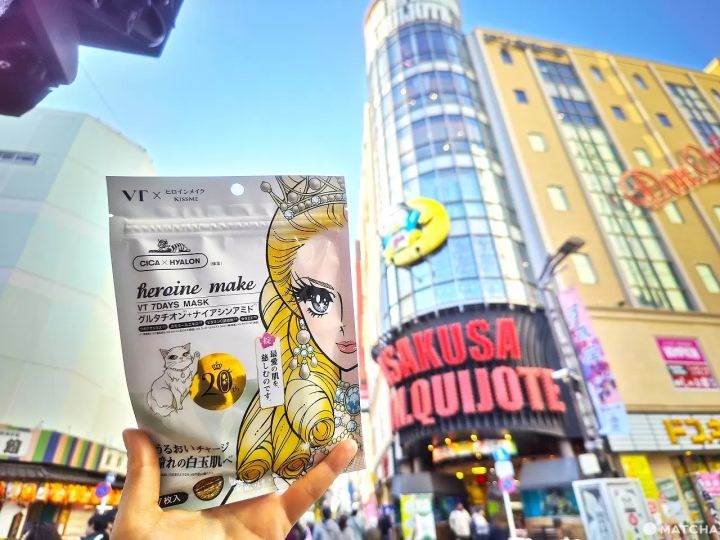

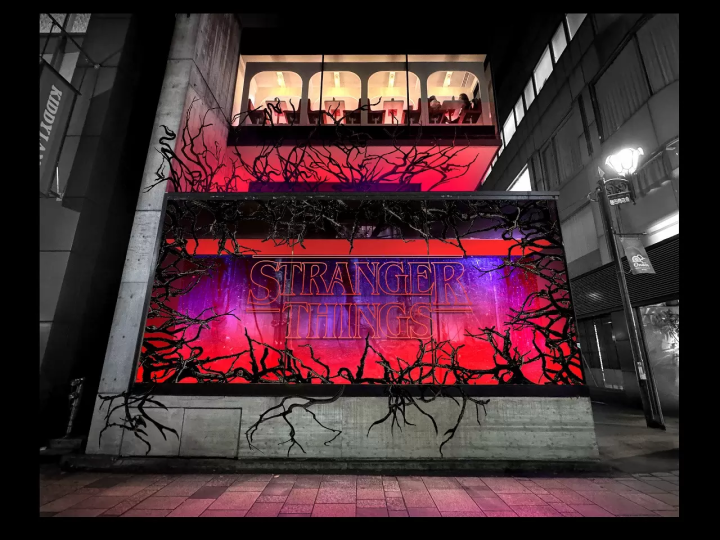
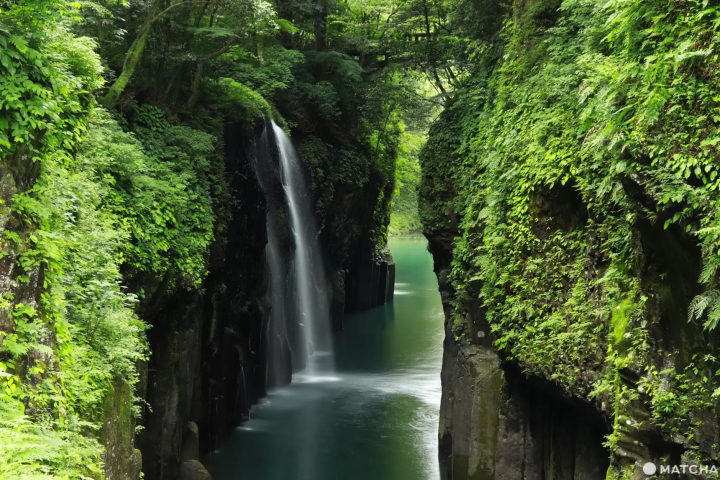




![[Wakayama Sign] Plums and plum wine](https://resources.matcha-jp.com/resize/720x2000/2025/12/08-252248.webp)
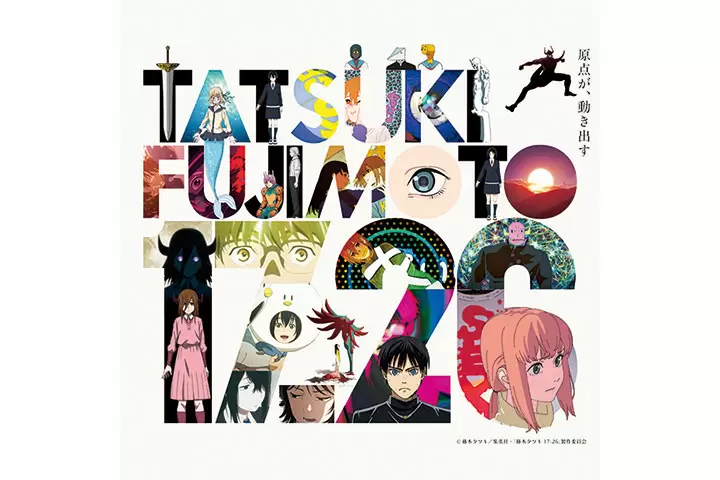
![[2025 Update] Introducing free Wi-Fi spots in Tokoname City , Aichi Prefecture](https://resources.matcha-jp.com/resize/720x2000/2025/12/16-253074.webp)
